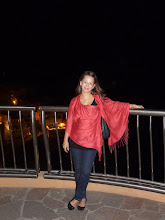Representation has several related meanings:
- Media images never simply present the world direct. They are always a construction, a re-presentation (to depict), rather then transparent window onto the real.
- How do groups, or situations, get routinely represented in the media? this relates to the world of political representatives: people 'who stand' in for us (school reps, representatives in Parliament, etc).
- The way some media re-present certain images, stories over and over again, making them seem 'natural' and familiar, and thereby often marginalising or even excluding others, making them unfamiliar or even threatening.
The media give us ways of imagining particular groups, identities and situations. When these relate to people they are sometimes called stereotypes or types; when they offer images of situations or processes, the term 'script' is sometimes used, with the implication that we grow familiar with these and often know how to 'perform' them in our own lives, to the exclusion of other ways of being.
Representation is always a process of mediation.
"Literal" view - representation as Reflection/Distortion of Reality (Glasgow Media Group) <= the event & its meaning exists before the representation.
"New view" - representation is what creates the meaning (Discourse - all things, constantly, being said about a topic ).
Stereotyping and 'scripts'
Stereotypes are widely circulated ideas or characteristics/assumptions to describe something/particular groups. They do not exist about all groups, but they try to create boundaries/fix groups (ie all Italian men are handsome/arrogant). Negative stereotypes usually demonstrate power relations. They also tend to change with time (ie role of women in society).
Stereotypes characteristics:
- Categorising and evaluating the group being stereotyped. (Stereotyping is a process of categorisation. This is necessary to make sense of the world, the flood of information. We all have to be 'prejudiced', in its root sense of 'pre-judging', in order to carve our way through any situation. We make mental maps of our worlds to navigate our way through them, and maps only ever represent parts of the real world, and in particular ways. We all employ typifications in certain situations. We all belong to groups that can be typified, and stereotyped (ie students, Londoners). We often make sense of people we meet on the basis of gestures, dress, voice, etc).
- They usually emphasise some easily grasped feature presumed to belong to the group in question, they imply that all members always have those features and then suggest that these characteristics are the cause of the group's position.
- The evaluation of the group is often a negative one..... tbc
- Stereotypes often try to insist on absolute differences and boundaries where the idea of a spectrum of difference is more appropriate.

No comments:
Post a Comment